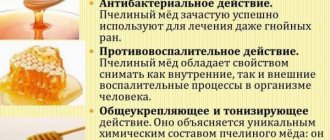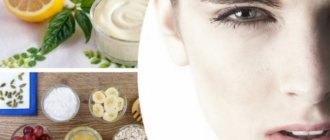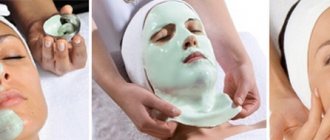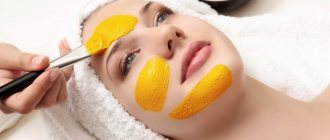Since the time of Cleopatra, clay masks have been famous for their properties to improve the condition of facial skin and prolong its youth. It is widely believed that the Egyptian queen was seductively beautiful thanks to kaolin, the name given to one of the types of clay that is white in color.
In modern cosmetology, about a dozen varieties of clay of different colors are used, each of which has its own unique properties. With their help, you can solve a variety of self-care problems. The main thing is to use the tools correctly:
- firstly, you need to know how often you can make a face mask from clay, how to apply it, how long to keep it on, how it can be removed without damaging the epithelium;
- secondly, you should choose the right composition in accordance with your skin type and the problem that needs to be solved.
You will learn about all this from this material. Let's look at each point in detail.
Beneficial properties of cosmetic clay for facial skin
In nature, there are clays that differ not only in color, composition, but also in beneficial properties. The main ones:
| Type of clay | Properties |
| Blue | It has a powerful cleansing effect, relieves inflammation and disinfects the epidermis. Suitable for working with normal and combination skin, often used for nourishing and nourishing and toning masks. |
| Green | Recommended for creating a remedy against increased fat content and eliminating greasy shine. Cleans clogged pores and normalizes the functioning of the sebaceous glands. |
| Red | It relieves redness and irritation better than others; it is advisable to use it for sensitive skin prone to rosacea. |
| Pink | It has a drying effect, tones and smoothes facial wrinkles, eliminates inflammation. Suitable for any skin type. |
| Yellow | Clay is used in masks against acne and pimples. The substance enriches cells with useful oxygen, eliminates waste and toxins. In addition, it is often used in anti-cellulite formulations. |
| Black | Black clay contains a large number of useful microelements, and as a result it nourishes even the deep layers of the epidermis. It has a strong cleansing effect, is used for wrapping and as part of masks against increased fat content, and against cellulite. Clay removes impurities and toxins. |
| White | Dries, tightens and cleanses the skin. It narrows cellular pores, which is also useful for preventing rashes and acne. Not recommended for use on rosacea. |
Almost all types of clay can be found in pharmacies or specialty stores. Sold in powder form or dry mixture for dilution in water.
Clay is a sedimentary rock that consists primarily of aluminum oxide and silicon. The specific color of a substance is determined by the content of chromophores - special pigment ions.
Indications/conditions for use
Cosmetic clay is a universal component for creating masks. Depending on the type and additional ingredients, it can be used for any skin type, condition, and age.
Recommendations for use:
- problematic and oily skin;
- the presence of acne, pimples and other cosmetic problems;
- pronounced greasy shine;
- redness or irritation, increased sensitivity;
- consequences of tanning and prolonged exposure to the sun;
- the appearance of the first signs of withering and aging of the skin.
Regular use of clay masks for facial skin improves the natural color, normalizes metabolic processes and the secretion of subcutaneous sebum, and also eliminates pollution and toxins even in the deep layers of the epidermis.
When is the best time to apply
The clay action process consists of 3 stages:
- Nutrition. A still fresh, just applied mask nourishes the skin with minerals, and the skin moisturized by the mask absorbs them. While the clay itself absorbs fat.
- Cooling. The wet mask gradually cools down from room temperature. At this stage, blood microcirculation improves, which evens out the color of the face.
- Drying. The mask dries, gradually losing its soft texture. When the skin begins to tighten, this is a sure signal that it is time to wash off the clay.
Complete drying should not be allowed. When applying a clay mask, it is important to read the instructions carefully and not leave the substance on your face for too long.
Clay quickly and effectively absorbs moisture, which is why it fights the production of excess sebum so well. But if you leave the mask on too long, your skin can become dry.
As a result, overdried, oily skin will only increase oil production, which will cause clogged pores and increased shine, and may also cause acne. Sensitive skin will respond to lack of moisture with irritation. Dry skin will become dull and drier than before.
The packages always indicate how long you should keep the mask on. Usually it is 5-10 minutes.
Recipes for the best homemade masks
When choosing components of the composition, you should take into account the condition of the skin and the body’s sensitivity to them. Below are 17 of the best remedies that are easy to prepare at home:
Classical
A traditional clay mask is used to actively cleanse the skin of impurities, remove impurities and toxins. Suitable for any skin type, recommended for those with increased oiliness and a tendency to acne. To enhance effectiveness, it is recommended to first peel using any method.
To prepare the mask, you need to mix 2 tbsp. l. black or blue clay, add the same amount of mineral water without gas and mix until a homogeneous viscous mass. Apply a thick layer to the face, neck and décolleté, remove after 15 minutes and apply moisturizer.
It is recommended to cool mineral water slightly to a temperature of 10-12°C before adding it to the mask.
With talc and glycerin
The product has a powerful drying and cleansing effect. Reduces oily shine and tightens pores. Used to combat acne and other unpleasant rashes without noticeable redness. With regular use, you can achieve a matte complexion and even out your natural shade. Suitable for any skin type.
Recipe: Mix 5 g of pharmaceutical glycerin and 20 g of green clay in powder form. Add 10 g of talc or baby powder, 1 tbsp. l. mineral water without gas. Mix thoroughly until a viscous mixture is obtained, apply to the face, avoiding the area around the mouth and eyes. Remove the product after 15 minutes using a cotton pad. You can find out about other masks with glycerin here.
With milk and glycerin
A nourishing face mask with a cleansing effect. Recommended for problematic skin types with high oil content. The product can be used for weekly use; before starting work, it is advisable to steam the epidermal cells.
The recipe is simple - you need to mix 1 tsp. green clay and 1 tbsp. l. milk with 3.2% fat content, add 1 tsp. talc (baby powder). Apply a thick layer of the mixture to your face, remove with a cotton pad after 15 minutes and wash thoroughly.
Make a mask with zinc oxide
The product has a drying and cleansing effect, most effectively for combating pimples and acne. After use, the skin becomes matte, oily shine is eliminated and the functioning of the sebaceous glands is normalized.
To prepare, mix 20 g of green clay, add 15 g of baby powder or oatmeal and 2 g of zinc oxide. To improve the viscosity, you can add a little mineral water or green tea. Distribute the composition onto a previously cleansed face in an even thin layer, remove with a cotton pad after 15-20 minutes.
Zinc oxide is a white, odorless powder. Widely used in traditional medicine recipes.
With magnesia and zinc oxide
An effective recipe for working with problem skin. With regular use, you can get rid of excess oil, acne and pimples. The product also relieves redness and has a whitening effect. It is also used to prevent various rashes. Suitable for any age, has no contraindications.
To prepare the mask, you need to mix 1 tsp. green clay and starch, add 0.5 tsp. zinc oxide and 2 tsp. magnesia, add a small amount of water until a homogeneous viscous mass is obtained. Using a brush, apply a thick layer to problem areas on the face, rinse with cool water after 15-20 minutes, and then use a moisturizer. You can learn about other starch masks in this material.
For dry skin
The product is suitable for moisturizing skin prone to dryness. Eliminates peeling and enhances the protective properties of cells. With weekly use, you can achieve matteness and relieve redness. The mask is not recommended for use at a young age.
To prepare, you need to mix 1 tsp. natural honey, add 1 tbsp. l. white clay, a few drops of melt or mineral water for thickness. Before starting work, you need to heat the composition in a water bath, and after cooling, apply it to problem areas. Rinse off with running water after 15 minutes, use a moisturizer.
For problematic
The product is suitable for deep cleansing, disinfection and drying of skin prone to oiliness and acne. The mask relieves irritation and redness; it is not recommended for extreme dryness or severe peeling.
Mask recipe: mix 3 tbsp. l. green clay, add 30 ml of alcohol, 2-3 drops of lemon juice. Mix thoroughly until a homogeneous viscous mass is obtained, apply to problem areas. Rinse off with plenty of water after 15 minutes and apply a moisturizer or gel.
The alcohol in the mask has a strong drying effect. The product is not recommended for use if the skin is extremely dry and flaky.
From blackheads
Suitable for combating acne, pimples and other unpleasant problems. The product should be used in a limited course; the procedure time should not be exceeded. The mask qualitatively cleanses pores, normalizes the production of subcutaneous sebum and reduces the risk of developing comedones.
To prepare, you need to mix 50 ml of water and 2 tbsp. l. blue clay, add a few drops of fresh lemon juice. Mix all components until a viscous composition is formed, apply only to problem areas of the face and neck. Rinse off after 10-15 minutes with plenty of cool water.
For normal skin
A homemade mask is used to regularly cleanse and nourish the skin. It has a soft and gentle effect; with regular use, the shade is evened out and small expression wrinkles are smoothed out. Suitable for any age and type of epidermis.
To prepare the composition, you need to mix 3 tsp. blue clay and 1.5 tsp. starch, 1 tsp. talc or oatmeal, add a little water to obtain a homogeneous creamy mass. Apply a thin layer to the face, rinse after 20 minutes.
Whitening
Suitable for evening out skin tone, combating severe redness and pigmentation. It is used only in a limited course lasting up to 1.5 months. Not recommended for sensitive and thin skin.
To prepare the mask, you need to mix 10 g of cosmetic clay (the color depends on the type and condition of the epidermis), 1 egg white and 2 pinches of table salt. Apply the product in a thin, uniform layer to problem areas, rinse with plenty of water after 10-15 minutes. After the procedure, you should apply a moisturizing gel or cream.
For acne
The mask is suitable for any skin type, effectively eliminates acne and prevents its subsequent reappearance. With regular use, it tightens pores, normalizes the functioning of the sebaceous glands and relieves inflammation. Does not cause allergies or side effects.
Recipe: mix 2 tbsp. l. green clay and 1 tbsp. l. bodyagi in powder form, add chilled mineral water until a homogeneous mixture is obtained. Apply the composition to problem areas of the face, rinse with running water after 25 minutes. You can find out about other badyagi masks in the article.
Bodyaga is a popular preparation based on seaweed. Typically used to eliminate swelling and combat bruises and abrasions.
Acne for oily skin
This homemade recipe is only suitable for oily skin types. The product relieves severe redness and inflammation, cleanses cells and effectively fights pimples, comedones and acne.
To prepare, mix 1 tbsp. l. blue clay and 1 tbsp. l. table salt and water until the consistency of a thick paste is achieved. Apply to problem areas of the face for 20 minutes, rinse with water and use moisturizer.
For any type
An effective anti-aging mask, with regular use you can achieve a lifting effect. The product saturates cells with useful microelements, nourishes and enhances metabolic processes and regeneration.
Mask recipe: 2 tbsp. l. Mix cosmetic clay with 3 tbsp. l. milk or low-fat cream, add 1 tsp. natural honey. Apply the composition in a thin layer on the face, rinse after 15 minutes with cool running water.
Correct Cleopatra mask
A well-known mask to eliminate signs of aging and skin aging. The product improves the contour of the face, softens and cleanses even the deep layers of the epidermis. Recommended for use only after 25-30 years.
To prepare, mix 2 tsp. white and the same amount of green clay, add 1 tsp. grape seed oil, achieve a soft consistency by adding mineral water. Apply a thin and even layer to the face, rinse with water without waiting for the composition to dry.
With cucumber juice
The product helps eliminate redness and inflammation, cleanses and brightens the skin. Suitable for regular use, the most effective product for working with problematic or oily epidermis.
The recipe is very simple - you need to mix 1 tbsp. l. cosmetic clay and 2 tbsp. l. cucumber juice, bring to a viscous consistency. Apply a thin layer to the face, neck and décolleté area. Rinse off with water or a slightly damp cotton pad after 15 minutes; after the procedure, it is advisable to wipe your face with an ice cube. You can find out about other cucumber masks by following the link.
Scrub mask
Suitable for home peeling; with regular use, the skin becomes soft and velvety to the touch. Even deep impurities are effectively removed, pores are narrowed and slightly dried.
To prepare, mix 2 tbsp. l. oatmeal and 1 tbsp. l. cosmetic clay, add 1 tbsp. l. whey and 1 egg yolk. Bring to a thick consistency, apply to the skin with massage movements and wash after 3-5 minutes. Read about other oatmeal face masks here.
It is recommended to use a facial scrub no more than once every 14 days. With constant use, the protective forces of cells are reduced and the functioning of the sebaceous glands is disrupted.
For irritated skin
Suitable for working with problematic or oily skin with severe redness and irritation. The product cleanses pores, fights pimples, acne and prevents their secondary appearance. Suitable for any age, but not recommended for chronic skin diseases (psoriasis, dermatitis or eczema).
Dilute 1 tbsp. l. white clay in 2 tbsp. l. tomato juice, mix the ingredients thoroughly. Apply a thick layer to problem areas for 15 minutes and then wash with cool water.
How to use, how it works, how many times a week you can do it
You cannot apply the application arbitrarily, since this is a medicinal product and too frequent procedures can only cause harm.
Cosmetologists recommend using cosmetic clay masks no more than once a week. If the skin is not too sensitive, then the number of procedures can be increased to two. To obtain a positive effect, the procedures should be taken in a course. After 10-12 masks, you need to give the dermis a rest for a while, and then carry out another course.
The application provides not only preliminary preparation of the face, but also subsequent care:
What products can be applied before
Before the procedure, the face should be prepared. You should remove all makeup and wash your face with baby soap or use an alcohol-free lotion. You can make a warm compress on the skin from a decoction of chamomile or celandine.
What products can be applied after
After the mask is washed off and all its components are completely removed, you can apply a light moisturizer to your face. Since masks are usually applied before bedtime, no other products are required.
If your face turns red after using clay
This reaction can be caused by various reasons. This is increased sensitivity to all ingredients of the application, application of the composition to dirty skin or irritation from mechanical particles.
If irritation occurs, you need to do an allergy test, properly prepare your face for the procedure and apply the composition more carefully.
How to store
If the mask includes dairy products or honey, then this composition cannot be stored and the mask is prepared for one time. Clay diluted with water can be stored in a cool place at any time. Simply add warm water to the dried mixture.
Rules for applying masks
To achieve lasting and pronounced results from using a homemade mask, it is important not only to correctly select the type of cosmetic clay and ingredients, but also to prepare and use the product correctly. Basic rules of application:
- To dilute the clay, it is advisable to use slightly chilled mineral water without gas; after mixing, you should get a homogeneous mixture, similar in consistency to thick sour cream.
- All clay masks should be prepared only in a glass or plastic container, avoiding metal utensils.
- Do not apply the product to the area around the eyes and mouth, as the skin in this area is especially delicate and sensitive.
- Before applying the product, you need to wash your face well and remove your makeup. To enhance the effect, it is recommended to pre-steam your face.
- During the procedure, it is recommended to take a convenient and comfortable position, avoid sudden movements and activity.
- Clay should be selected depending on the problem being solved and skin type; before the first use, it is advisable to check the skin’s reaction to the components.
- The duration of the procedure and the regularity of using homemade masks depend on the type and condition of the skin, as well as the composition of the product.
The finished composition for a homemade mask cannot be stored for longer than 12-18 hours; only fresh products should be used. It is best to prepare a small amount for single use.
Before using cosmetic clay, you need to check the expiration date and quality of the material. It should be in the form of a powder with a characteristic color and no odor.
How to cook properly
The positive factor of clay as a cosmetic product is that masks from it can be prepared and used at home. To prepare the mask, fine clay powder must be diluted to the consistency of sour cream. For this purpose, distilled or boiled water can be used, but most often, the cosmetic composition is prepared using decoctions of medicinal herbs, dairy products or honey. In some recipes, the powder is diluted with glycerin.
When preparing a mask at home, you need to thoroughly mix all the components included in the composition so that the finished mixture is a homogeneous mass. It should not contain lumps or hard abrasive particles that can damage the skin when applying the composition to the face.
You need to monitor the consistency of the resulting composition. If the mixture is too thick, it will harden quickly and the beneficial substances will not have time to be absorbed into the skin, and the liquid mixture will simply drain after application.
You should not use metal utensils when making a cosmetic mask. Containers made of glass, earthenware or porcelain are best suited for this purpose.
Contraindications
Despite the fact that cosmetic clay is a completely natural product that rarely leads to side effects and allergies, there are contraindications for use.
The main ones:
- mechanical damage to the skin: wounds, cuts and abrasions;
- severe inflammatory process;
- the presence of purulent formations;
- allergies or individual intolerance to the components of the composition;
- chronic dermatological diseases during relapse.
If you have persistent skin problems, it is advisable to consult a doctor or dermatologist before making a homemade mask.
Which company's products are best to choose?
It just so happens that the popularity of models depends on the manufacturing companies. A self-respecting company will not sell low-quality products because it has a reputation.
For 2022, the leaders in cosmetology in the production of the best quality clay masks are recognized as:
- France;
- Italy;
- South Korea;
- Latvia;
- Russia;
- India;
- Ukraine.
It is worth noting that Korean drugs are gaining great popularity. Buyers like the good quality of the product and the low price.
Results
- Cosmetic clay is an organic substance actively used in cosmetology and medicine. Suitable for home wraps and making masks.
- Types of clay should be selected depending on the condition and type of skin, age. Popular varieties: white, blue, black and green.
- The component has a wide range of useful properties. Helps cleanse, relieve inflammation and redness. Suitable for moisturizing and nourishing the skin, fighting acne.
- To prepare other types of clay face masks, mineral water, talc, dairy products and pharmaceutical cleansing preparations are used as auxiliary components.
Criterias of choice
When purchasing a product, you should pay attention to the following criteria:
- Compound. High-quality and useful components provide 100% positive results. Fragrances, parabens and preservatives should not be present in maca.
- Skin type. Each type of dermis has its own needs. Therefore, you need to select a product based on the characteristics and problems of your skin.
- Type of mask. The healing properties of each type of clay are different. Its color and origin play a big role in determining the main benefits of the product.
- Manufacturer. It is better to buy masks from well-known, trusted brands or companies, as they value their reputation.











